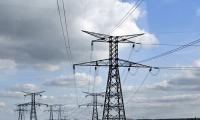ISLAMABAD: “The objectification and sexualisation of girls in the media are linked to violence against women and girls worldwide,” says a 2021 Unicef report.
In 2019, Amnesty International reported, “Despite being among the top-ranking countries in the world in terms of gender equality, the four Nordic countries (Denmark, Finland, Norway, and Sweden) have disturbingly high levels of rape, and survivors of sexual violence are being failed by their justice systems.”
According to the UN Crime Trend Statistics 2013, the UK has the highest incidence of rape, followed by the US and Brazil. “In absolute terms, the US has the most rape cases globally. Brazil is second on this measure, followed by India,” Times of India reported in 2018.
The World Population Review’s rape statistics by country 2021 ranks the following ten countries with the highest rape rate: South Africa, Botswana, Lesotho, Swaziland, Bermuda, Sweden, Suriname, Costa Rica, Nicaragua and Grenada. The above reports are just a few examples that point out the relevance of what Prime Minister Imran Khan said about obscenity and crimes against women and children. These reports also show the high incidence of rape cases in countries like the US, UK, India and in large parts of Europe, and Africa. On the contrary, there is hardly any mention in this context of any of the Muslim countries.
Prime Minister Imran Khan spoke against obscenity and urged upon the need for promoting purdah to check rape cases against women and children. His statement has been given an altogether different meaning by certain elements in the media and those representing civil society and human rights organisations. Khan has repeatedly urged upon the need of checking the spread of ‘the Hollywood and Bollywood culture of obscenity’ in Pakistan in order to ‘save the country's family system and socio-religious values.’
Unicef’s issued a report titled ‘Not An Object: On Sexualization and Exploitation of Women and Girls’ on January 11, 2021. While referring to a report by the American Psychological Association (APA) on the sexualization of girls in the media, Unicef found that girls are depicted in a sexual manner more often than boys; dressed in revealing clothing, and with bodily postures or facial expressions that imply sexual readiness. “In a study of the print media, researchers at the Wesleyan University found that on average, across 58 different magazines, 51.8 percent of advertisements that featured women portrayed them as sex objects. However, when women appeared in advertisements in men’s magazines, they were objectified 76 percent of the time,” read the report.
It said, “Every 10 minutes, somewhere in the world, an adolescent girl dies as a result of violence. Nearly one in five girls is sexually abused at least once in her life. In the United States, 18 percent of girls report that by age 17 they have been victims of a sexual assault or abuse at the hands of another adolescent.”
According to the Amnesty International 2019 report, the four Nordic countries, which are referred to by many as role models in terms of women’s rights and a low crime rate, have been found to have a disturbingly high level of rape cases because of their failed justice systems.
The Amnesty International report states: “Despite being among the top-ranking countries in the world in terms of gender equality, the four Nordic countries (Denmark, Finland, Norway and Sweden) have disturbingly high levels of rape, and survivors of sexual violence are being failed by their justice systems.” “It is a paradox that the Nordic countries, which have strong records of upholding gender equality, suffer shockingly high levels of rape,” Kumi Naidoo, Amnesty International’s Secretary General was reported as saying.
The report also spoke about unreported cases and said: “Social stigma and a lack of trust in the justice system often mean that women and girls fail to report attacks, and those that do are frequently failed by callous and prejudiced justice systems or outdated laws. One survivor told us she would never have reported her rape if she had known how she would have been treated, and her story is typical in justice systems which are stacked against rape survivors.”
According to the report, every year around 50,000 women in Finland experience sexual violence, including rape. Most of those responsible for these crimes are never brought to justice. In 2017, only 209 convictions were secured for rape. According to the report, Norwegian authorities have not taken the necessary measures to prevent rape and other forms of sexual violence or to address the consequences when such crimes occur. Prevailing and erroneous myths about rape make it hard for rape victims to report the crime to the police or to seek medical help. They also influence the way rape cases are handled by the criminal justice system.
Many rapes are not reported to the police, but even those survivors who do turn to the police face a lengthy and often flawed process.
In the case of Sweden, the report says that despite the large number of rapes, there are very low prosecution rates in the country with only 6 percent of cases involving adults resulting in prosecution in 2017. Low prosecution and conviction rates affect confidence in the justice system. It added that rape in Denmark is hugely under-reported and even when women do go to the police, the chances of prosecution or conviction are very slim. Of the 24,000 women found by a recent study to have experienced rape or attempted rape in 2017 alone, just 890 rapes were reported to the police. Of these, 535 resulted in prosecutions and only 94 in convictions.
Judge raised the query after warning to announce the verdict if Maneka’s lawyer remained absent from the hearing and...
The development came amid the United States’ explicit opposition to the bilateral project
Qaiser claimed that both parties rejected entire process which led to the formation of the incumbent government
She examined a proposed site for the construction of a state-of-the-art hospital in Murree and approved
Raoof Hasan warned against any attempt to extend the tenure of Chief Justice of Pakistan Qazi Faez Isa by another...
These payments will help PBA members to clear some of their liabilities







